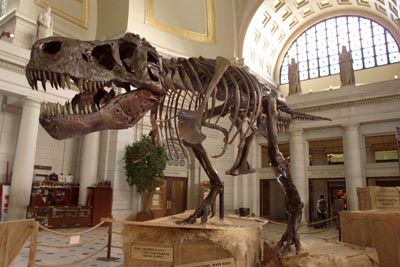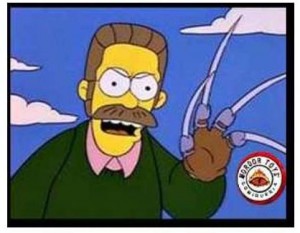Therizinosaurs were some of the true freaks of the dinosaur world. I mean that in the nicest possible way for something that looked like the sick offspring of a giant chicken and Freddie Kruger. Perhaps the weirdest things about them were these long, scythe-like claws, that although may have seemed deadly, probably weren’t unless you were a particularly scrummy looking piece of foliage. That’s right, these cousins of tyrannosaurs and other theropods used their wicked sickle-claws for trimming hedges for food.
New dinosaur competes to be Europe’s largest ever land predator
This was originally posted at: https://theconversation.com/new-dinosaur-competes-to-be-europes-largest-land-predator-23997
Say hello to Torvosaurus gurneyi, the newly discovered theropod dinosaur that lived in Europe around 157-145 million years ago. It is potentially the largest land predator discovered in Europe and one of the largest carnivorous dinosaurs from the late Jurassic period. The identification of this new species plays an important role in developing our understanding of how different dinosaur species were distributed across the globe, as well as the ecology of large European predators at this time.
Similar in appearance to the North American species Torvosaurus tanneri, the remains found in Portugal were initially regarded as near-identical to them. But closer scrutiny and greater knowledge of the anatomy of theropod dinosaurs has led to several key features being identified in the new species.
Theropod skulls: a note of caution
Morphometrics is a horrible word, but refers to a technique that is gaining increased traction in palaeontology in recent years. It essentially is a way of measuring anatomy, or specific aspects of anatomy. An extension of it is called geometric morphometrics, and this relies on using co-ordinate points on fossils to analyse things like shape variation.
The newly minted Dr Christian Foth had a study out earlier this year that did a kind of meta-analysis of morphometrics, using theropod skulls (the group including dinosaurs like T. rex and Troodon, as well as modern birds) as an example. A lot of research has gone into using morphometrics to look at patterns in theropod skull variation through time, as looking at these evolutionary patterns is not only awesome, but can also tell us about their ascent to success through time.
Theropod dinosaurs were waaay more diverse than previously thought
Dinosaurs! What image sprang to your mind then? There’s a reasonable chance, I’d hazard, that your brain just conjured an image of ferocious Tyrannosaurus rex, a nimble and intelligent Velociraptor mongoliensis, or any one of the other meat-eating theropods, notoriously infamous thanks to a certain eccentric millionaire with a passion for splicing genes. These two species of dinosaur are pretty well known to both pop culture and science, and have many fantastic skeletons to represent their iconic names. But not all of our dinosaury friends are so lucky. Theropods (the mostly meat-eating ones, including modern birds) often shed teeth during feeding, or through ‘playing’ with each other or even possible displays of dominance during periods of courtship (much like an average night at most clubs). Either way, it means that many of the fossil remnants from the Mesozoic era we have of extinct theropods are actually just teeth!

What I guess people think of when they think of dinosaurs. Source.

